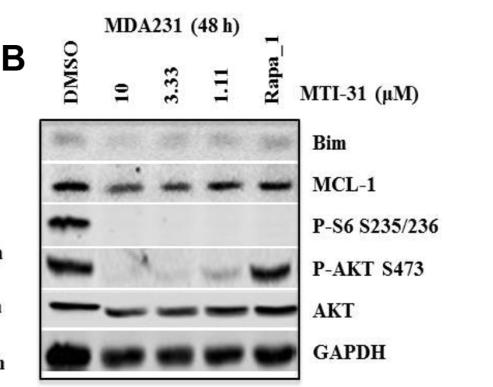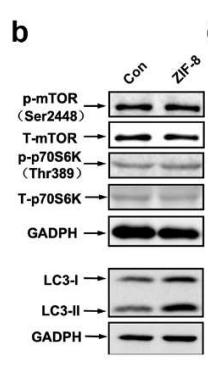MCL1 Antibody - #AF5311
製品説明
*The optimal dilutions should be determined by the end user.
*Tips:
WB: For western blot detection of denatured protein samples. IHC: For immunohistochemical detection of paraffin sections (IHC-p) or frozen sections (IHC-f) of tissue samples. IF/ICC: For immunofluorescence detection of cell samples. ELISA(peptide): For ELISA detection of antigenic peptide.
引用形式: Affinity Biosciences Cat# AF5311, RRID:AB_2837796.
折りたたみ/展開
Bcl 2 related protein EAT/mcl1; Bcl-2-like protein 3; Bcl-2-related protein EAT/mcl1; BCL2 related; Bcl2-L-3; BCL2L3; EAT; Induced myeloid leukemia cell differentiation protein Mcl 1; Induced myeloid leukemia cell differentiation protein Mcl-1; MCL 1; MCL1; MCL1-ES; mcl1/EAT; MCL1_HUMAN; MCL1L; MCL1S; MGC104264; MGC1839; Myeloid Cell Leukemia 1; Myeloid cell leukemia ES; Myeloid cell leukemia sequence 1; Myeloid cell leukemia sequence 1 BCL2 related; Myeloid cell leukemia sequence 1 isoform 1; OTTHUMP00000032794; OTTHUMP00000032795; TM;
免疫原
A synthesized peptide derived from human MCL1, corresponding to a region within the internal amino acids.
- Q07820 MCL1_HUMAN:
- Protein BLAST With
- NCBI/
- ExPASy/
- Uniprot
MFGLKRNAVIGLNLYCGGAGLGAGSGGATRPGGRLLATEKEASARREIGGGEAGAVIGGSAGASPPSTLTPDSRRVARPPPIGAEVPDVTATPARLLFFAPTRRAAPLEEMEAPAADAIMSPEEELDGYEPEPLGKRPAVLPLLELVGESGNNTSTDGSLPSTPPPAEEEEDELYRQSLEIISRYLREQATGAKDTKPMGRSGATSRKALETLRRVGDGVQRNHETAFQGMLRKLDIKNEDDVKSLSRVMIHVFSDGVTNWGRIVTLISFGAFVAKHLKTINQESCIEPLAESITDVLVRTKRDWLVKQRGWDGFVEFFHVEDLEGGIRNVLLAFAGVAGVGAGLAYLIR
種類予測
Score>80(red) has high confidence and is suggested to be used for WB detection. *The prediction model is mainly based on the alignment of immunogen sequences, the results are for reference only, not as the basis of quality assurance.
High(score>80) Medium(80>score>50) Low(score<50) No confidence
研究背景
Involved in the regulation of apoptosis versus cell survival, and in the maintenance of viability but not of proliferation. Mediates its effects by interactions with a number of other regulators of apoptosis. Isoform 1 inhibits apoptosis. Isoform 2 promotes apoptosis.
Cleaved by CASP3 during apoptosis. In intact cells cleavage occurs preferentially after Asp-127, yielding a pro-apoptotic 28 kDa C-terminal fragment.
Rapidly degraded in the absence of phosphorylation on Thr-163 in the PEST region.
Phosphorylated on Ser-159, by GSK3, in response to IL3/interleukin-3 withdrawal. Phosphorylation at Ser-159 induces ubiquitination and proteasomal degradation, abrogating the anti-apoptotic activity. Treatment with taxol or okadaic acid induces phosphorylation on additional sites.
Ubiquitinated. Ubiquitination is induced by phosphorylation at Ser-159.
Membrane>Single-pass membrane protein. Cytoplasm. Mitochondrion. Nucleus>Nucleoplasm.
Note: Cytoplasmic, associated with mitochondria.
Belongs to the Bcl-2 family.
研究領域
· Cellular Processes > Cell growth and death > Apoptosis. (View pathway)
· Environmental Information Processing > Signal transduction > PI3K-Akt signaling pathway. (View pathway)
· Environmental Information Processing > Signal transduction > Jak-STAT signaling pathway. (View pathway)
· Human Diseases > Cancers: Overview > MicroRNAs in cancer.
参考文献
Application: WB Species: mouse Sample: NIH3T3 cells
Application: WB Species: human Sample:
Restrictive clause
Affinity Biosciences tests all products strictly. Citations are provided as a resource for additional applications that have not been validated by Affinity Biosciences. Please choose the appropriate format for each application and consult Materials and Methods sections for additional details about the use of any product in these publications.
For Research Use Only.
Not for use in diagnostic or therapeutic procedures. Not for resale. Not for distribution without written consent. Affinity Biosciences will not be held responsible for patent infringement or other violations that may occur with the use of our products. Affinity Biosciences, Affinity Biosciences Logo and all other trademarks are the property of Affinity Biosciences LTD.








